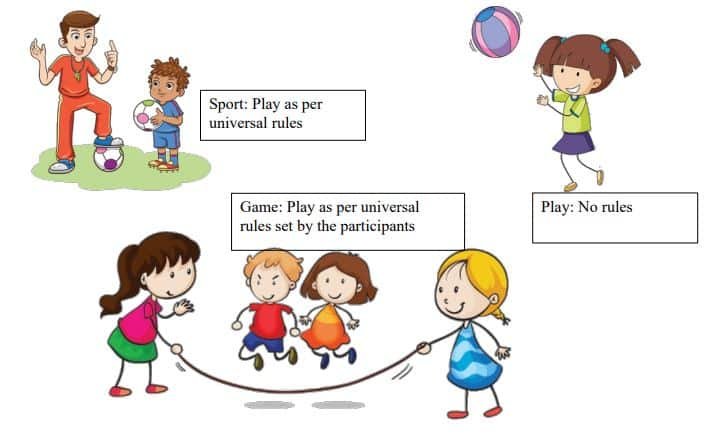Free Play in Class 10 Notes refers to spontaneous, unstructured activities that children choose and control themselves. It promotes creativity, physical development, social interaction, and emotional well-being. These notes cover the meaning, characteristics, benefits, and role of a facilitator in encouraging free play, especially in early years education.
Free Play Class 10 Notes
A sport has some set of rules, but when you play, then it depends on the participants, with or without any set of rules. In play there is no winner or loser. The outcome of the play is just to have fun.
Describe the importance and purpose of free play.
What is Free Play?
The primary aim of ‘Play,’ though, is to have fun and a competition; it can be conducted or performed in a structured or an unstructured way. When the play is planned and conducted step by step in a particular way, it becomes a structured play. When it is conducted or performed impromptu, without any plan or steps to be followed, it is considered an unstructured play. Both structured and unstructured play, though, require adult supervision in order to eliminate any injuries, especially when working with early years’ children.

There are both advantages and disadvantages of excess usage of Free Play.

Monitoring and Inventory management
Sports equipment or props play an important role in sports, and they have different shapes, sizes, types, etc. This equipment depends on different factors like indoor/outdoor sports, age of the learner, infrastructure availability, etc. You have to keep that in mind while selecting any sports equipment. These are
- Age appropriateness: The equipment/props must be age appropriate.
- Industry Standard: They must be manufactured as per the industry guidelines. E.g., tennis balls made of rubber and not leather, cricket bats made of wood and not metal, etc.
- Sports type: They must be selected as per the type of the sport. For example, basketball and volleyball should not be used to play football and vice versa.
- Infrastructure: Depending on the type of sport and where it is played, the selection of props and equipment is determined. For example, indoor courts/play areas require less rugged equipment thanoutdoor equipment that is exposed to direct sun and other harsh weather.
- Group size: They must be calculated as per the number of learners. If a large group of students, for example, 40 students, play at a time, it is always best to divide them into smaller groups, and each group should be given an adequate number of props to play with.
- Budget: One of the most important factors that influences the selection of props and equipment is the budget availability. Sports equipment prices are directly affected by their quality.
Disclaimer: We have taken an effort to provide you with the accurate handout of “Free Play Class 10 Notes“. If you feel that there is any error or mistake, please contact me at anuraganand2017@gmail.com.
The above CBSE study material present on our websites is for education purpose, not our copyrights. All the above content and Screenshot are taken from Physical Activity Trainer Class 10 (Code 418) NCERT Textbook/ CBSE Textbook, CBSE Sample Paper, CBSE Old Sample Paper, CBSE Board Paper and CBSE Support Material which is present in CBSEACADEMIC website, NCERT websiteThis Textbook and Support Material are legally copyright by Central Board of Secondary Education. We are only providing a medium and helping the students to improve the performances in the examination.
Images and content shown above are the property of individual organizations and are used here for reference purposes only.
For more information, refer to the official CBSE textbooks available at cbseacademic.nic.in
